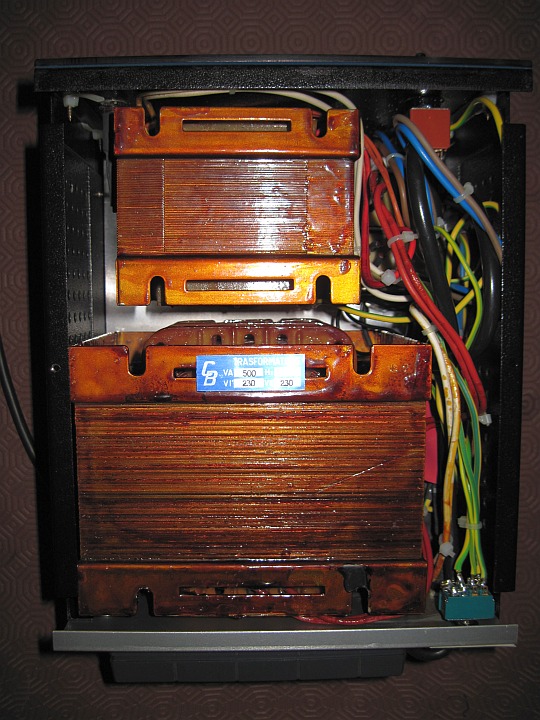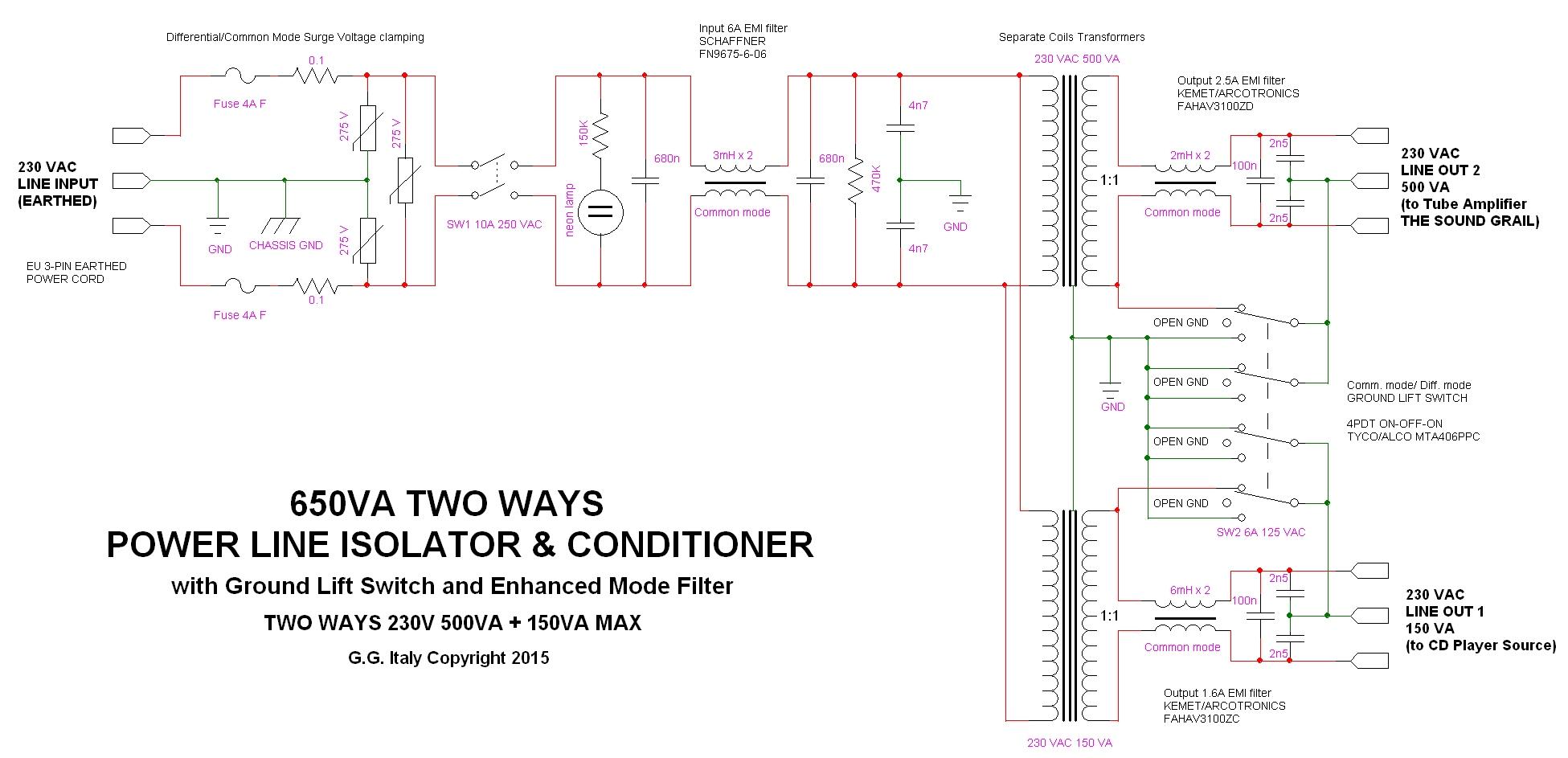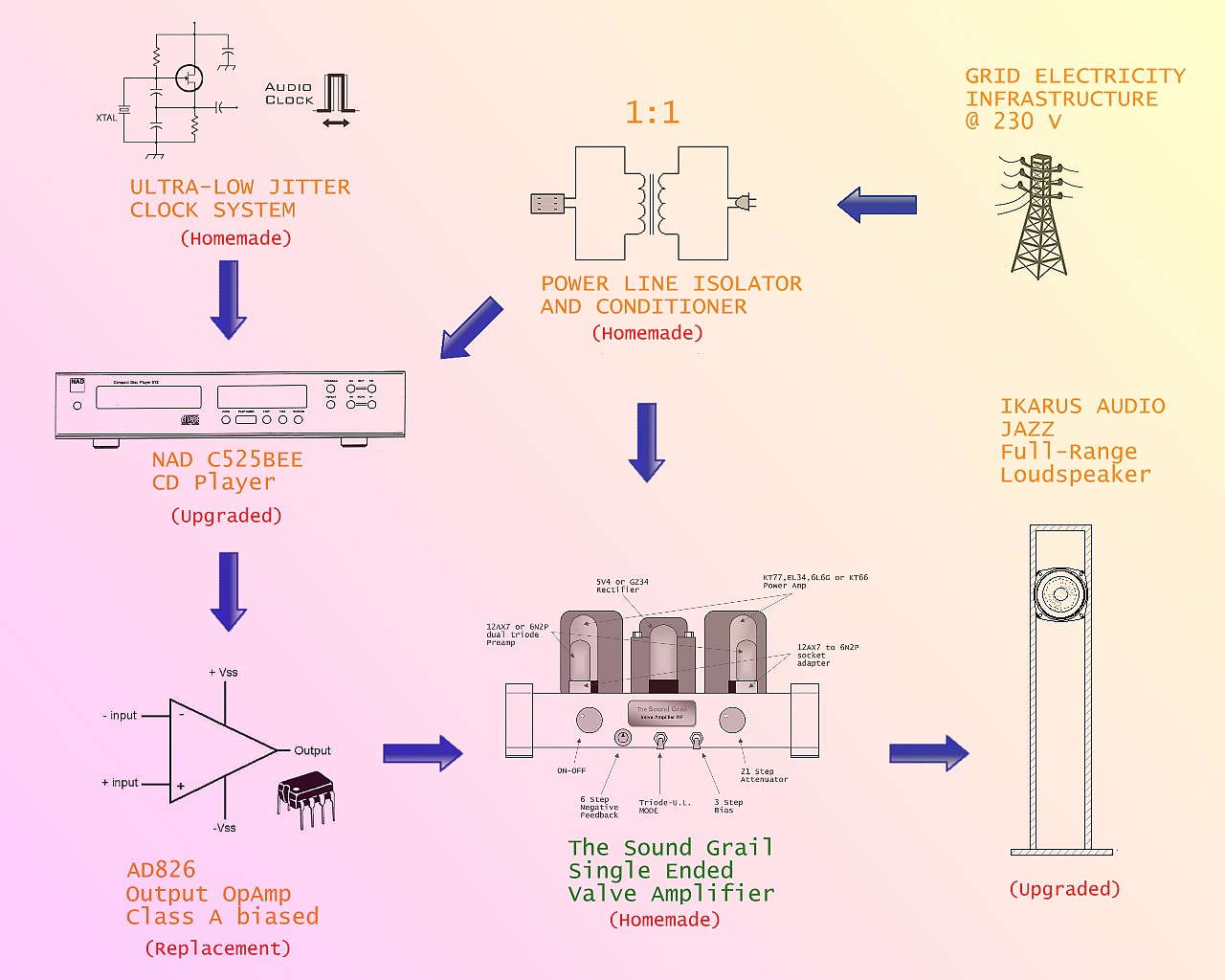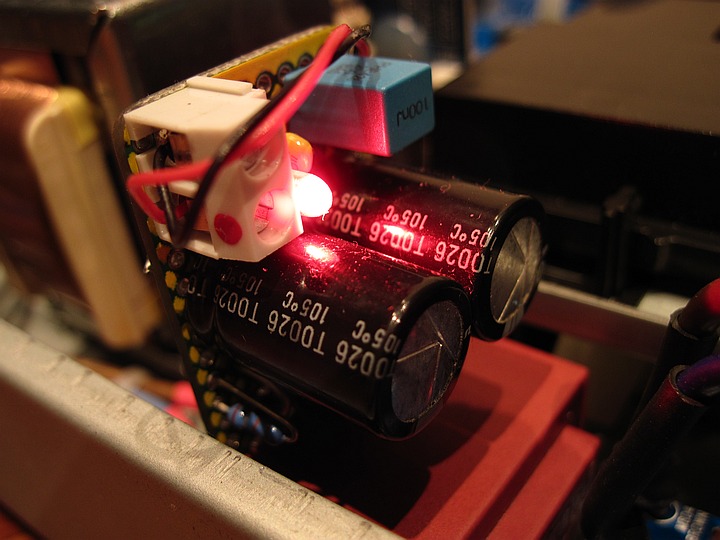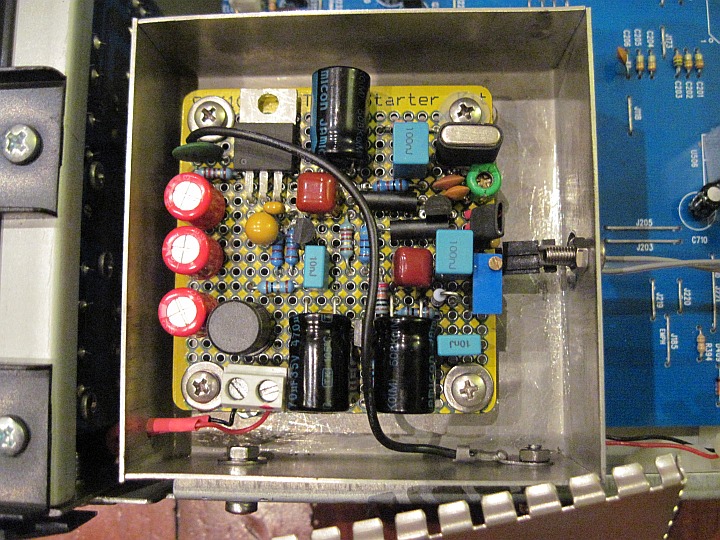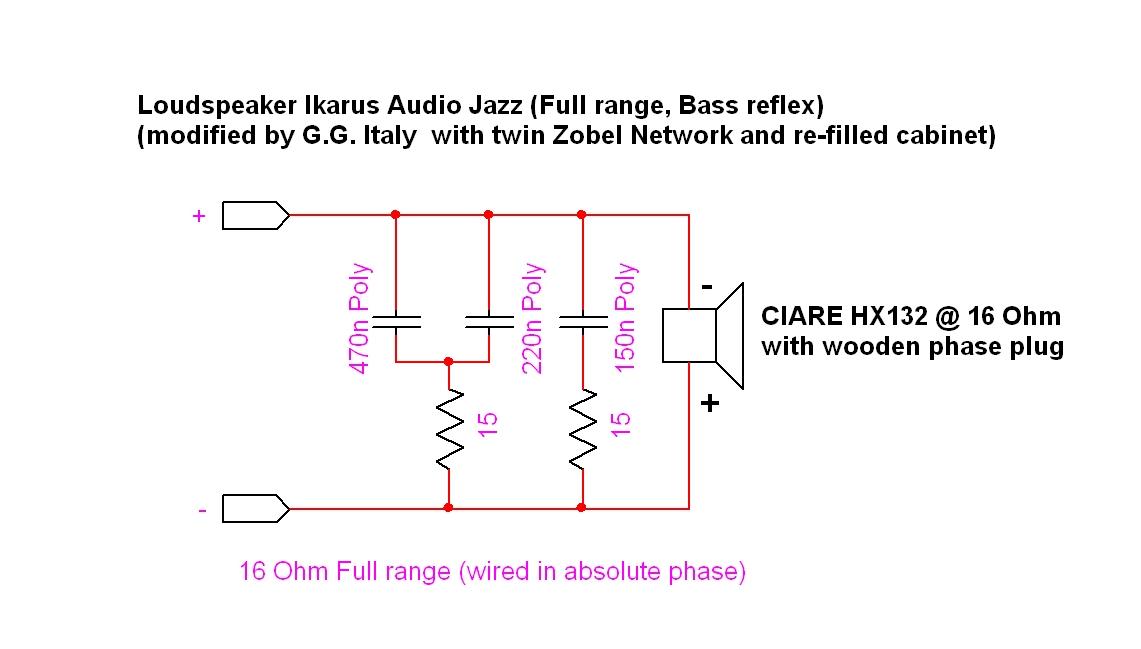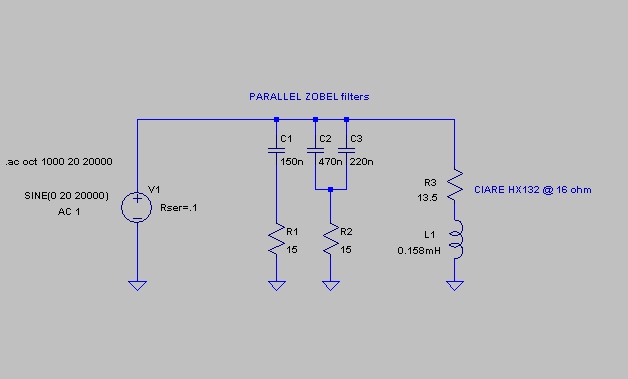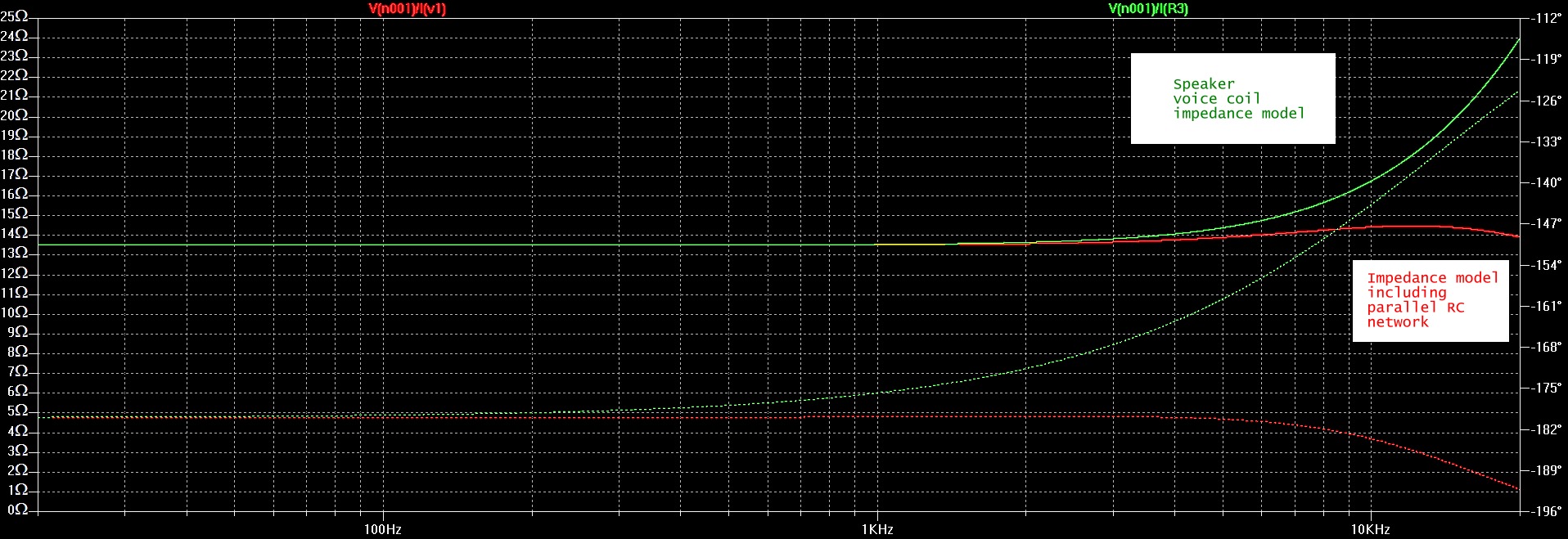The tube amplifier: The Sound Grail (homemade)

The power supply
The gain stage
The output power stage
The digital source: NAD CD PLAYER C525BEE (upgraded)
The NAD C525BEE CD
Player was one of the best selling CD Players in NAD's illustrious
history with several 5 Star reviews and awards adding to its fame. This
was a 2007 model and was a great CD player for the money as it sounds
like players twice or three times its price.
The
player is CD-RW compatible and is equipped with a Burr-Brown
Sigma-Delta 20 bit Digital to Analogue Converter and Burr-Brown OPA2604
output op amps. It has separate power regulators for analogue and
digital sections.
Usually the NAD designs are not much amenable to modding and there is only so much you can do to improve their sound quality.
I anyway modded a C525BEE player that I bought in the following way, as the sonic improvement was subtle but noticeable.
1) Replaced the 4-pole active filter DAC output op amps (Burr-Brown JFet OPA2604) with AD826, high speed (50MHz- 350V/µs SR) bipolar op amps made by Analog Devices. These video amplifiers reproduce the best female voice I've ever heard among any op amp tested. I have tried more than 30 different opamps (TI, BB, LTC, NAT, ADI) in different machines (CD players, integrated amplifiers, headphone amplifiers...) for at least eight years and at the end, soon or later, after periodically op amp rolling, I always, still, fall in love with this opamp's sound all the times. Reason: the lowest listening fatiguing, heavenly midrange, clean and deep bass and over all an emotional magic 3D soundstage. From a technical point of view nothing to complain about: fully CLoad, cable driving capability, unity gain stable, hi-current, high slew rate, very low impedance load, class AB output stage.
Then, each stage has been biased into Class A through a 4.7K ohm 1% resistor connected from the negative supply rail to the output and soldered on the rear of the PCB. A small heat sink was mounted on these chips for better thermal stability.
2) Removed the DC decoupling capacitors and the following bias resistors at the output of the PCM1710 audio converter: the AD826 can easily handle the additional 2.5VDC offset at the DAC output, due to the fact that the positive voltage rail has been raised to 12 VDC ( see modification No 11) and the maximum output voltage of the CD player is declared to be 2.2V RMS @ +0 dB.
3) Removed the mute transistors and lowered the output impedance to 150 ohm by using jumper wires. Upgraded the parallel output capacitors in the signal path (one of this electrolytic) with a unique large metallized polyester film one. Upgraded the 330pF ceramic feedback capacitor with a MKT film one by Wima.
4) Replaced the original crystal clock with a low jitter master clock circuit, which is the single supply version of the Kwak-Clock 7, designed by E. Kwak and equipped with an ultrafast comparator made by Analog Devices (AD8561AR). The homemade clock board has its separate transformer and low-noise power supply module and it is installed inside a RFI/EMI shielded aluminium box, close to the player's clock input.
5) Inserted few ferrite rings around the power cable, transformer outputs, display unit and CD mechanism wiring. After some listening tests I anyway decided to eliminate the ferrite which I added between the power transformer and the board (before fuses and rectifiers) as it tends to make the machine sounding less airy.
6) Replaced all the 1N4001s in the power supply for the digital section with high current type diodes in order to feed the motor with more current and take less time during mechanism operations and tracking.
7) Replaced all the 1N4001s in the power supply for the analog section with ultrafast soft-recovery type diodes that turn off so gradually that they do not emit the little spurt of noise during switching that other diodes emit.
8) Added a front panel button to allow the user to switch off the display in order to cut the noise generating by the display’s power supply which should reduce the player's noise floor.
9) Replaced most power supply electrolytic capacitors with better quality, low ESR type, larger value and higher operating voltage capacitors.
10) Replaced the electrolytic bypass capacitors of the Digital to Analogue converter PCM1710 with tantalum types which have a more stable ESR over temperature.
11) Eliminated via jumper wires the 220 ohm resistors in series with the opamp's power supply rails in order to increase the supply voltage to 12 VDC. This reduces the HF noise on the high impedance supply rail, generated by the current pulses of the opamp when is driving a load, modulated with the signal level.
In the below photos you can see: the additional clock power supply module, the low jitter master clock board put inside a shielded aluminium box and the button that was added to turn off the display.
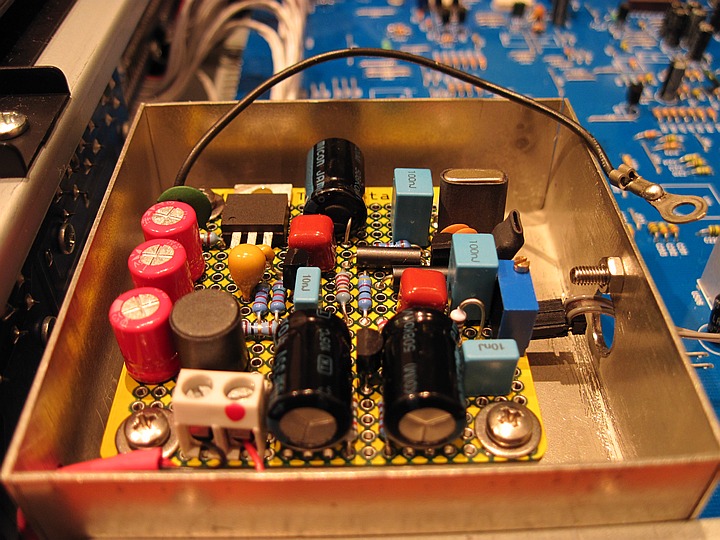
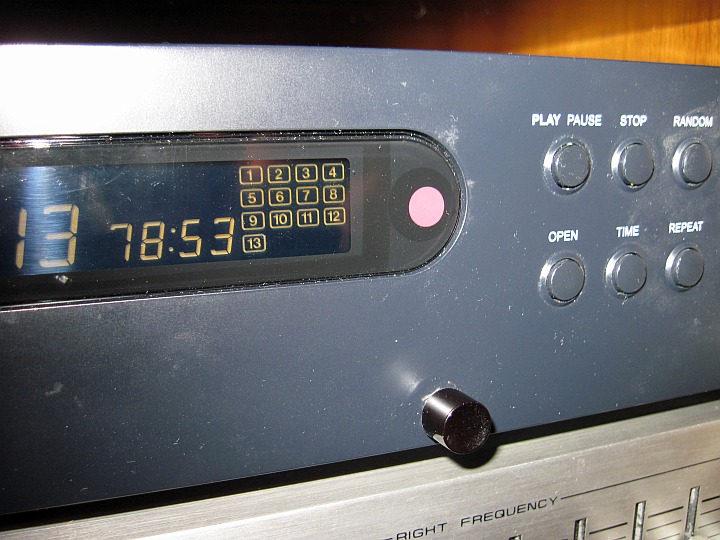

The loudspeakers: Ikarus Audio Jazz (upgraded)
The “Jazz” are small tower cabinets beautifully designed around 2005 by Gianfranco Pellas, Italian founder of “Ikarus Audio”, a family business specialized in the production of customized and homemade valve amplifiers and horn full range loudspeakers, sold directly to the customers.
The Jazz utilize a bass-reflex technique with a rear port and are equipped with a unique high efficiency (92dB) driver “IK130”, made by Ciare exclusively for IKARUS AUDIO. This is a custom variant of the industrial HX132, paper cone and fabric surround full range speaker, here equipped with 16 ohm impedance voice coil, mounting a wooden phase plug to eliminate front wave cancellation and improve HF dispersion. The cabinet size are cm 19,5 x 23,5 x h 87,5 and the weight is 16 Kg each; the enclosure is 100 percent birch plywood (19 mm thick).
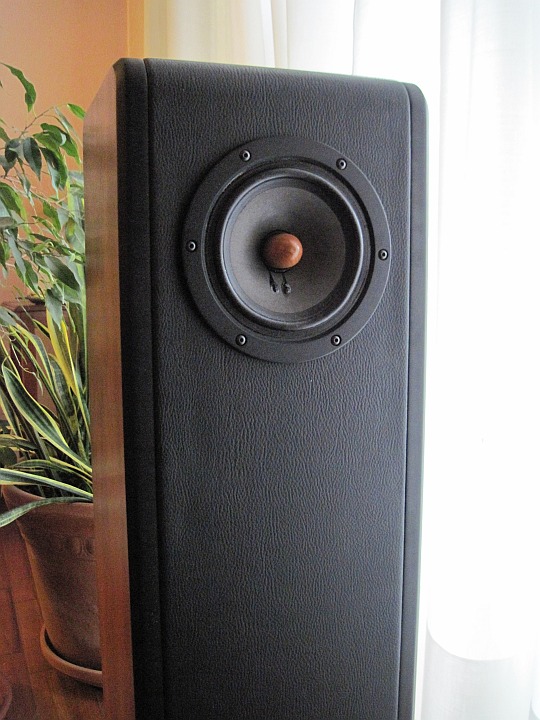
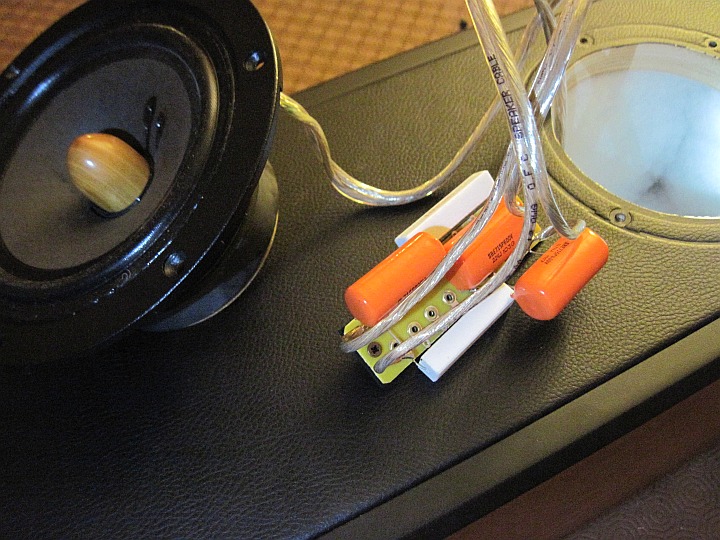
The loudspeakers originally came with no filter inside, but after many listening tests with different configurations I decided to include one designed by me, tuned for the optimum sonic performance in consideration of the source amplifier and the loudspeakers placement.
This filter consists in two parallel RC networks and it is a variant of the Zobel network, an impedance compensation circuit which corrects the impedance curve of a voice-coil driver that usually continues to rise with frequency as it becomes inductive. Any valve amplifier is inductively loaded by a voice-coil speaker, so the correct form for interpreting an inductive load on a plate current/voltage curve is an ellipse which may also exceed the maximum dissipation curve limit. A Zobel RC Network is usually designed to achieve flat impedance and a safer load: in fact it should present a stable pure resistive load to the amplifier and should add to the stability of the amplifier by forcing the gain to stay below 0dB after crossover.
The calculated voice-coil impedance curves, with and without this custom equalization circuit, are herebelow simulated with LTspice software.
I have finally also slight increased the damping material of the enclosure adding inside poly fiber panels to reduce standing waves and eliminate resonances. The optimal quantity has been calibrated according to my personal taste.
Then, at the end, by inverting the speaker phase, I wired the loudspeaker in absolute phase with the rest of the audio chain: in fact it looks that my cd-player is inverting somewhere the absolute polarity of everything it plays back through its D/A converter.
1) Right-click on the above link
3) Navigate to the directory where you wish to store the file
4) Change the file extension into ".asc" by deleting ".doc" string
5) Click "Save"
The power line isolator and conditioner: Isolatore e Filtro di Rete Audio (homemade)
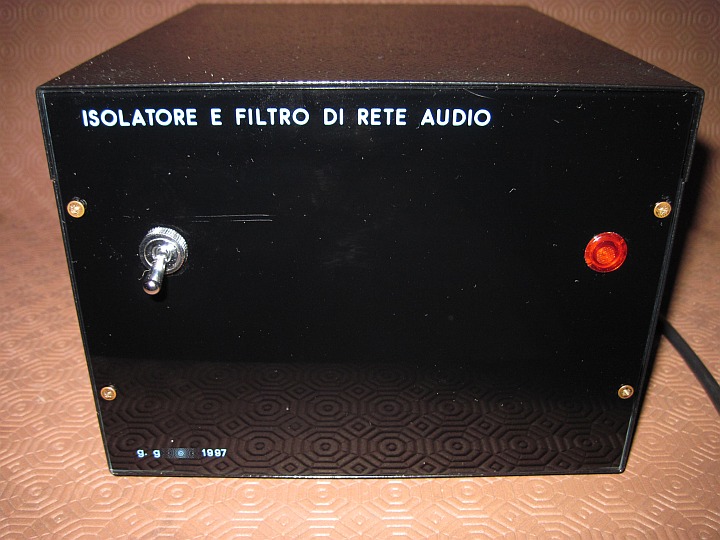
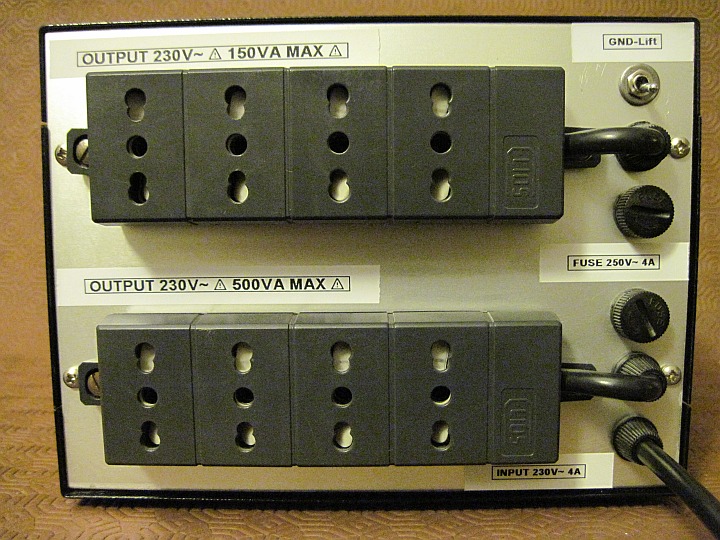
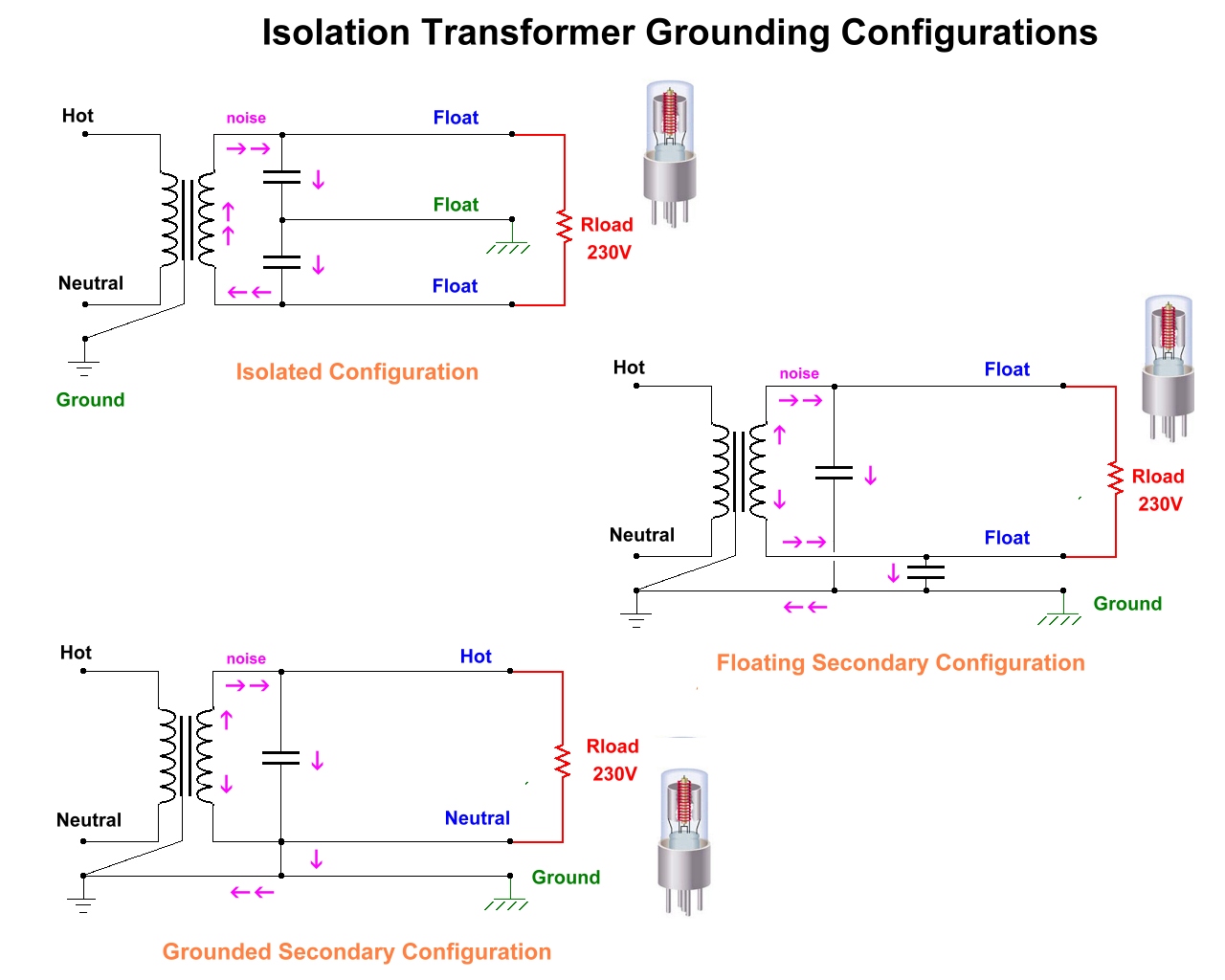
A good line conditioner is an electrical device which provides clean AC power to audio electronic equipments. It should provide complete electrical isolation as well as noise and spike attenuation. Line power conditioning has always roused much controversy among people: a power line conditioner never transforms a bad system into a good one, but can improve the sound by reducing or eliminating noise line contamination.
The following design comes out from several hours of listening: this is my best (sonically speaking) solution even if probably it won't meet all the European directives and security norm (CE/ EN/ EMC/ EMI/ LVD ..).
Let start to analyse the circuit.
On the input side, a transient voltage suppression circuitry based on fuses on each leg of the primary power side and metal-oxide varistors, provides a good surge protection. Following this, a well dimensioned filter with toroidal-differential-mode choke and parallel small capacitors reduces entering RFI and EMI noise without restricting current.
In the middle two powerful back-to-back isolation transformers suppress low-frequency common mode noise riding on the power lines (hot and neutral) and provides isolation from the input AC line. Their non concentric twin primary and secondary windings are wound on separate bobbins, providing maximum isolation and low interwinding capacitance. Their huge construction (17 Kg or 37 pounds), ideal for loads up to 150 and 500 watts respectively, allow them to work cool without restricting dynamics.
On the output side two filter banks isolate the individual power outlets reducing mutual interference and any digital noise between the CD player and the tube amplifier.
Because noise among electronic devices is always created as the components have slightly different potential to ground, a three state switch allows the user to choose one of the following grounding design solutions:
1) Isolated Configuration: the output ground is not hard connected, thus the output mains are floating. There are no earth leakage currents and this circuit provides just differential mode noise suppression. But it avoids any ground-loop-induced hum, even if, connecting multiple devices, completely negates the safety aspect (a fault in one item will render connected equipment live).
2) Floating Secondary Configuration: the output ground is tied to the incoming main safety earth generating a common path for leakage currents to or from the earth. This provides a strong common mode noise suppression, as the secondary is preserved floating. This current path might defeat any isolating effect, but in general does not incur a shock hazard as long as the safety ground remains intact and the user at no time touches both the hot and the neutral within the appliance.
3) Grounded Secondary Configuration: the output ground is tied to both the secondary of the transformer and to the incoming main safety earth generating a common path for leakage currents to or from the earth. The power delivery is unbalanced in differential mode and the inbound common-mode noise then is converted to differential-mode noise.
Each solution brings slight different audio performances, but, on my experience, solution # 3 reveals the best sonic compromise.
Inserting this line conditioner in my audio chain, the outcoming sound is much cleaner and smoother as the amplifier is not amplifying spurious power line noises. The silence between signals is more apparent. Transients are cleaner and more relaxed. Listening fatigue is also reduced. At high frequency there is less harshness, as noise at mid-high audio frequency is greatly reduced.
